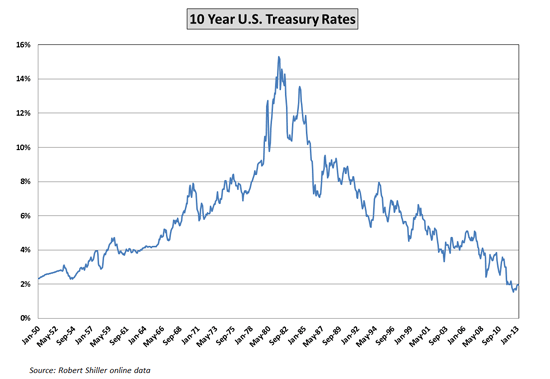What Happens to Bonds When Interest Rates Rise_1
Post on: 18 Август, 2015 No Comment

Bonds
A bond is a debt instrument issued by a company to raise capital. In exchange for buying bonds, investors are given a return on their investment, typically around 5 percent annually. On a $1,000 bond this would be equal to $50 per year in interest. Depending on the yield to maturity, or YTM, on the bond, this can result in a significant return over time. When bank account return rates are low, investing in a long-term bond can be a good investment strategy.
Short Term and Long Term
Contrary to what might be expected, short-term bonds are not as significantly affected by a rise in interest rates as long-term bonds. Likewise, a fixed-interest bond is also more affected by a rise in interest rates than a bond with a variable interest rate. This is because a long-term bond with a fixed return is based on several years’ expected returns, namely at the exact same rate per year. If that rate is now less than other available bonds, the overall value of the bond needs to be heavily discounted to sell it.
Holding On
References
More Like This
What Happens to Bond Prices When Interest Rates Go Up?
How to Invest With Rising Interest Rates
The Effect of a Rising Interest Rate
You May Also Like
When interest rates rise, bond prices fall, and so do the shares of bond funds. But bond fund problems will go beyond.
Comments. You May Also Like. How to Invest With Rising Interest Rates. For bond or bond fund investors, rising interest rates can.
Bonds are debt instruments issued by corporations and governments. In exchange for buying a bond, the bond issuer agrees to pay you.
A bond is a debt instrument that's usually issued in $1,000 denominations and pays a fixed amount of interest until maturity, when.
The market value of bond securities changes with changing interest rates. Bonds are issued with fixed coupon yields, and the market adjusts.
A yield is the amount of annual income expressed as a percentage of principal. Bond funds collect interest from bonds in their.
The main risk for Treasury Bonds is interest rate changes. Since Treasury bonds are loans to the federal government, the risk of.
Bonds are debt securities issued by both government entities and corporations. Bonds trade in the secondary markets, and investors can buy bonds.
Companies and governments sell bonds at the par value with a stated interest rate. However, since bonds can be traded like stocks.
For bond or bond fund investors, rising interest rates can result in losses on their bond holdings. Rising rates result in falling.
Interest rates on everything from small-business loans to home mortgages are closely aligned to the yields on U.S. Treasury bonds, particularly the.
The fact that gold prices rose astronomically from 2008 to 2011 near the same time that the Fed lowered interest rates is.
In a normal interest rate environment long-term interest rates are higher than short-term interest rates because investors demand more compensation for the.














